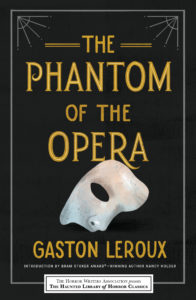The Tenth Girl by Sara Faring
Imprint, 2019
ISBN-13: 978-1250304506
Available: Hardcover, paperback, Kindle edition, audiobook, audio CD
Teenage Mavi, living in Argentina under the military dictatiorship of Jorge Videla in 1978, is barely scraping by in the streets of Buenos Aires after her parents have “disappeared”. Desperate to evade the police herself, Mavi uses forged credentials to get a job as an English teacher at the Vaccaro School, an exclusive boarding school in a huge Gothic mansion located in isolated Patagonia. Angel is a disembodied visitant from 2020 to Mavi’s time and place.
The Vaccaro School was built by the wealthy De Vaccaro family in the nineteenth century on land seized by the fictional indigenous Zapuche tribe. Mavi’s uncle explains that the Zapuche enacted bloody rituals when their land was seized. Sixty years ago, a mysterious illness reputed to have sprung from a Zapuche curse killed nearly all the residents of the Vaccaro School, and a girl had to be sacrificed to stop it. It is just now reopening. I think the author was trying to make a commentary on the damage colonialism has done to Argentina and its indigenous people, but the “Indian curse” and “savage bloody sacrifice” tropes really need to be set aside. The Zapuche being a fictional tribe means that the author lost an opportunity to bring attention to the existing problems of Argentina’s indigenous peoples.
The Tenth Girl was promoted as a Gothic psychological thriller with a twist, and for about 350 pages it hits pretty much every trope in the toolbox for a Gothic thriller, without actually having a story that goes much of anywhere. One thing that I did find interesting was the way the house seemed impossibly larger and space more disorganized on the inside than on the outside, reminding me of the Winchester Mansion or Hill House. Sara Faring is an Argentine-American, so maybe that’s why she set the book in a remote part of Argentina, but the majority of this could have taken place in any isolated location. Faring’s descriptions of Patagonia are lovingly written, but there are too few of them, as for the majority of the book, the school’s inhabitants are trapped inside by the terrible weather. The sudden twist turned the events and characters in a completely different direction, leading to the raising of some interesting philosophical questions. However, I also felt that it cheapened the historical events chronicled in the book. I felt that the twist ending undercut the harsh realities of Argentina’s “desaparecidos”. The twist also explained in part why the depiction of indigenous people is so problematic, but I think it was just unneccessary in the first place. I’d love to say more about why, but that would spoil the book for potential readers.
I picked this up because it made the preliminary ballot for the 2020 Stokers in the YA category. It was a real struggle for me to stick with the book for the first 350 pages, but I’m glad I persisted. Faring’s twist ending really changed my perspective on the events and characters. I have trouble imagining many teens picking up this doorstopper and working their way through the whole thing, though.
Contains: pedophilia, self-harm, mentions of suicide, violence, gore.








Follow Us!